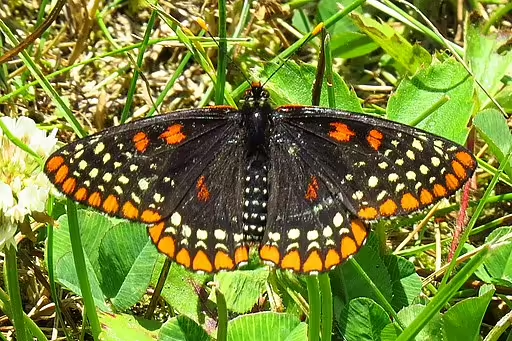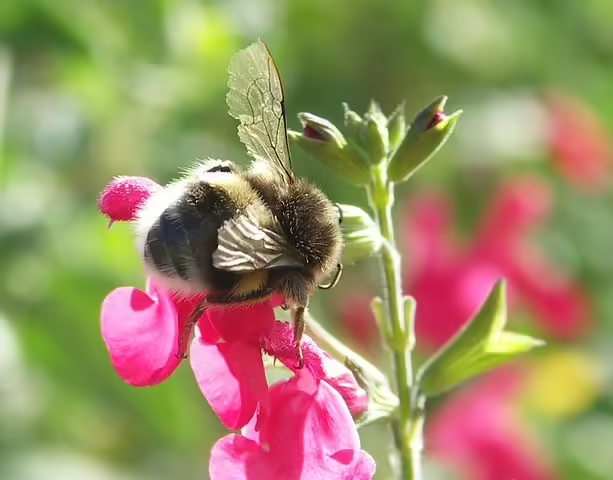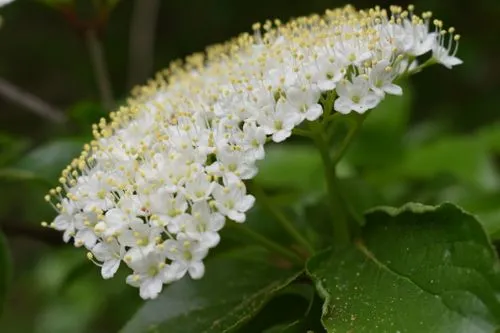Table of Contents for Roan Mountain Goldenrod (Solidago roanensis)
Roan Mountain Goldenrod (Solidago roanensis) is a herbaceous perennial that is native to the eastern United States. This species is a host to the baltimore checkerspot (Euphydryas phaeton) and several moths. Growing from 1 foot to 5 feet tall, this species grows in prairies, glades, barrens, thickets, and mixed flatwoods. The yellow flowers bloom from August to October and the plant is hardy in zones 6-8.
Taxonomy and Naming of Roan Mountain Goldenrod (Solidago roanensis)

Taxonomy
Roan Mountain Goldenrod (Solidago roanensis) was originally named and described by John Torry and Asa Gray as Solidago curtisii var. monticola in 1842. Later in 1892, Thomas Porter, another American botanist, raised to the species level and gave its current name. It has kept this same name since and is a member of the Aster Family (Asteraceae).
Meaning of the Scientific and Common Names
Scientific Name
The genus name, Solidago, derives from the Latin words, Solidus and ago, which together mean to make (ago) whole (Solidus). This meaning comes from the medicinal uses of the plant. The species name, roanensis, is a Latinized name for Roan Mountain, a location of the plant.
Common Name and Alternative Names
The common name comes from the original description location of the plant.
Physical Description

- Plant Type: This plant is a herbaceous perennial.
- Height: 0.5 ft (0.2 m) to 4 ft (1.5 m)
- Stem: The stems are erect, and glabrous below to pubescent above (Flora of North America).
- Leaves: The leaves are alternate, with basal and cauline leaves, elliptic to elliptic-ovate to rhombic, upper cauline sessile, and serrate margins. They are 2 in (5 cm) to 6 in (15 cm) long and 0.4 in (1 cm) to 2 in (5 cm) wide.
- Flower color: yellow
- Blooming period: This plant blooms from July to October.
- Fruiting type and period: This plant has achenes that mature in the late fall and winter.
Range of Roan Mountain Goldenrod in the United States and Canada

This goldenrod species is native to the eastern United States. It is considered to be rare in the states of Kentucky, Maryland, and Pennsylvania.
Habitat

This species grows in wooded areas, clearings, bald edges, and crevices in rocks (Flora of North America), xeric sites (Krings and Franklin 2004).
Hosted Insects

This goldenrod, like a lot of other goldenrods, is a host to the wavy-lined emerald (Synchlora aerata). The genus in general is a host to the Baltimore Checkerspot (Euphydryas phaeton) and black swallowtail (Papilio polyxenes).
Other Supported Wildlife

This species is a nectar source to other butterflies, skippers, bees, and wasps during the growing season. It is especially important since it provides a nectar source in the late season.
Frequently Asked Questions
Does this plant have any ethnobotanical uses?
The Native American Ethobotanical Database does not specifically cite this species, but Solidago in general has been used for pain relief, coughs, stomach ailments, and heart medicine.
How is this plant distinguished from other Goldenrods?
This goldenrod is considered to be intermediate between the hard-leaf flat-top goldenrod (Solidago puberula) and the Blue Ridge goldenrod (Solidago sphithamaea). However the involucral bracts are narrower as compared to S. puberula and the achenes are smooth as compared to S. spithamaea (Porter 1892). This goldenrod has also been described as being intermediate between Atlantic Goldenrod (Solidago arguta) and the Curtis’ Goldenrod (Solidago curtisii) (Uttal 1971).
Is this plant invasive?
This has not been noted as being weedy.
Gardening with Roan Mountain Goldenrod

Hardiness
This species is hardy in zones 6-8. If your garden is within these zones and you have the right growing conditions (soil, moisture and exposure), you may well be able to grow this plant. However, if planted outside of its range, the hosted species may not recognize the plant or be harmed by ingesting a different species with an unfamiliar chemical composition.
Optimal Conditions
This species enjoys full sun to part-shade in medium to dry well-drained soils.
References
- Krings, Alexander and Carlyle Franklin. 2004. An Annotated Preliminary Checklist of the Vascular Flora of Camp Butner, North Carolina. Sida 21: 1131-1139.
- Porter, Thomas C. 1892. Some additions to our Eastern Flora. Bulletin of the Torrey Botanical Club 19: 128-131.
- Uttal, L.J. 1971. Solidago roanensis Porter – Origin, Relations, and Confused Species. Preliminary Observations. Virginia Journal of Science 22: 108.


